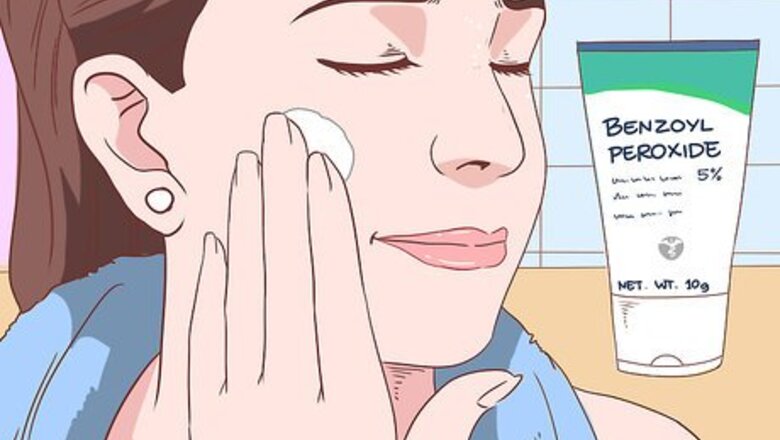
views
Using Acne Treatments
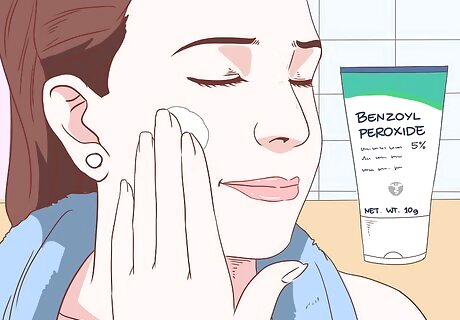
Use over-the-counter products. Many over-the-counter (OTC) products can help fight acne, including blind pimples. When using OTC products, it's important to wash the problem areas with a gentle cleanser twice daily (unless your skin is too sensitive to be washed more than once a day). Use just enough acne product to cover the blind pimple and other problem areas on your skin. OTC products typically include one or more of the following ingredients: Benzoyl peroxide kills bacteria, removes dead skin cells and excess oil, and can help unclog pores. It may cause dry skin, scaling, and burning and can bleach hair or clothing. Salicylic acid helps prevent pores from becoming plugged. It may cause mild stinging and/or skin irritation. Alpha hydroxy acids. There are two types of alpha hydroxy acids commonly found in OTC products: glycolic acid and lactic acid. Both acids effectively remove dead skin cells, reduce inflammation, and stimulate new skin growth. Sulfur removes dead skin cells and excess oil to prevent pores from clogging and helps kill bacteria on your skin. It may cause dry skin and carry an unpleasant odor.
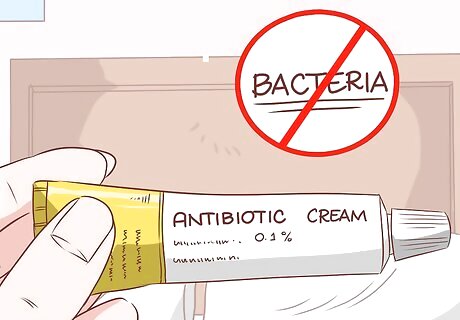
Try prescription-strength topicals. Talk to your dermatologist about prescription-strength medications for persistent or stubborn acne. Topical prescriptions are medications applied topically (to the external surface of your skin). Wash your skin with a gentle cleanser and dry your face for about 15 minutes before using topical medication to bring a blind pimple to a head. Common prescription-strength topicals include one or more of the following ingredients: Retinoids prevent hair follicles from becoming plugged, which can help prevent pimples from forming. Retinoids also reduce inflammation. Start by applying retinoids in the evening 3 times each week, working your way up to daily use as your skin becomes accustomed to the medicine. Antibiotics kill excess bacteria on your skin and reduce redness and inflammation. Topical antibiotics are often combined with benzoyl peroxide to reduce the chances of becoming resistant to the antibiotics. Common antibiotic combinations include clindamycin with benzoyl peroxide (Benzaclin, Duac) and erythromycin with benzoyl peroxide (Benzamycin). Dapsone (Aczone) kills bacteria and prevents skin pores from becoming clogged.
Trying Home Remedies
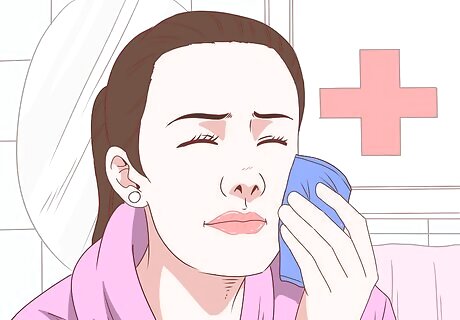
Use heat or ice therapy. Depending on your skin and the severity of your blind pimple, you may want to use heat or ice therapy to temporarily reduce discomfort. A warm compress can dry out a blind pimple and help it drain, while an ice pack can help reduce pain and swelling at the site of the pimple. Use ice for the early stages of a blind pimple. If the pimple gets larger, more inflamed, or more painful, try using a warm compress to draw out the fluid. You can make a simple warm compress by soaking a clean washcloth in warm to hot water (but be careful not to burn yourself). Apply a warm compress for just a few minutes at a time, and repeat the process as often as necessary throughout the day. For ice therapy, apply an ice pack or ice cubes wrapped in a cloth to the blind pimple for no more than 10 minutes at a time for up to 4 times each day.
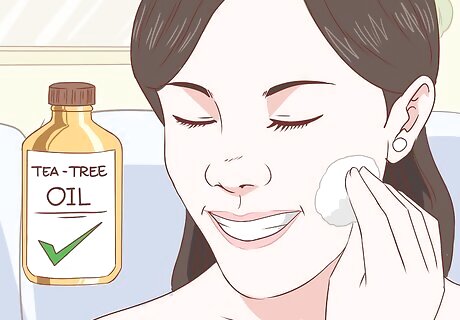
Try tea tree oil. Tea tree oil is often used in natural remedies to treat various skin conditions. Applying tea tree oil to a blind pimple may help remove dead skin cells, oil, and dirt that have clogged your pores and reduce inflammation. Dilute the essential oil with a carrier oil (such as coconut oil) and dab it onto the pimple. Do a patch-test before placing tea tree oil on your face. Dab the diluted oil on your inner arm. Avoid placing the oil on your pimple if your skin turns red or itchy. This homeopathic method may work best when combined with other skincare routines, like exfoliators or a gentle face wash.
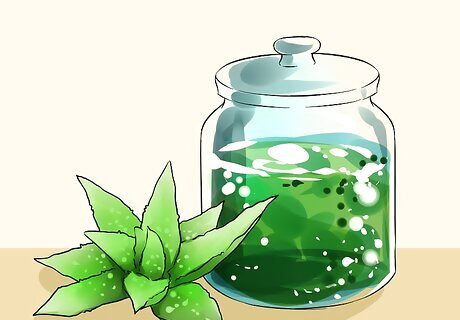
Apply aloe vera. Aloe vera can help soothe skin ailments and is believed to help treat acne and pimples. Simply apply the aloe vera gel to the affected area in the morning and evening.. Studies suggest using aloe vera alongside other acne treatments or medications can be more effective than topical prescriptions alone.
Preventing Blind Pimples
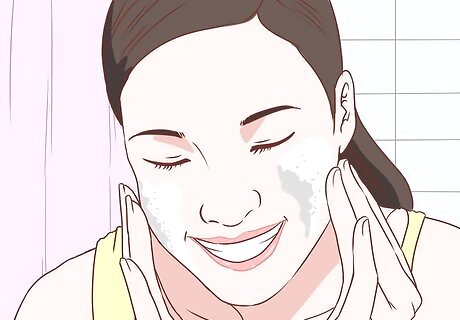
Practice good hygiene by washing your face regularly. Keeping your face clean is one of the best things you can do to prevent blind pimples from forming. Most pimples are caused by pores clogged with dirt, bacteria, and oil, all of which can be removed by using a daily facial wash. Follow these tips to properly wash your face: Choose a gentle cleanser. Opt for facial cleansers that are non-abrasive and do not contain alcohol. Wet your face with clean, lukewarm water. Then, use your fingertips (after washing your hands) to apply the cleanser. Do not scrub your skin, as this can cause irritation and damage. Rinse with clean, lukewarm water and pat your face dry with a clean, soft towel. Wash twice daily and any time you sweat excessively.
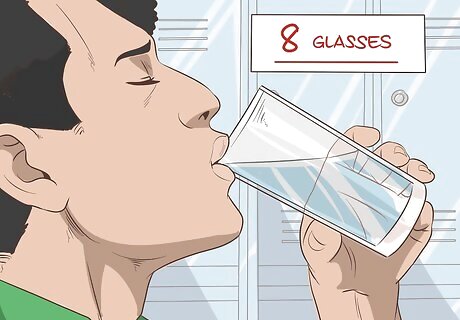
Stay hydrated. Studies have shown that drinking an adequate amount of water each day can improve your skin's elasticity and overall appearance. This may help reduce acne and pimples. Aim to drink at least 11 c (88 fl oz) of water a day if you’re a women and 15 c (120 fl oz) if you’re a man.
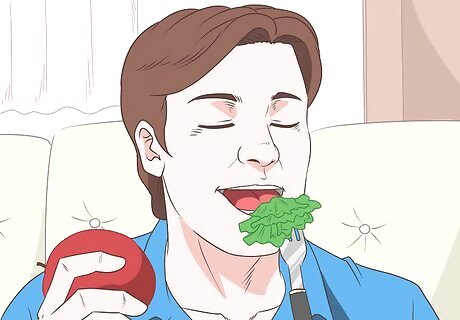
Eat a healthy diet. While there’s no conclusive evidence that a healthy diet stops acne, studies have shown that foods high in refined sugar, fat, and dairy have been linked to acne production. So, avoid foods that are high in sugar and fat. Similarly, try to stay away from processed foods (such as fast food) as much as possible. Foods that cause your blood sugar to rise (like sugar and carbohydrates) cause your body to release insulin, which may cause your oil glands to overproduce. A low-glycemic diet may help prevent acne.
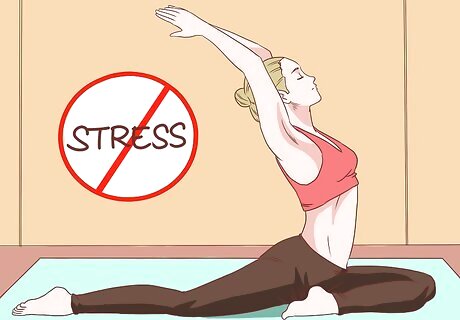
Reduce your stress. Stress is not likely to create new cases of acne, but if you're already prone to acne, stress may induce a bad flare-up. Reducing your daily stress levels can help reduce acne outbreaks, including blind pimples. Try autogenic relaxation. This method of stress relief involves repeating calming words or phrases while focusing on your body's sensations. Try concentrating on your breathing or relaxing each limb while reciting a calming mantra. Use progressive muscle relaxation. This technique involves tensing, holding, and then relaxing each major muscle group in your body in succession. Start at your head and work your way down, or vice versa. Hold your tensed muscles for at least 5 seconds, then release the tenseness and let your muscles relax for 30 seconds before moving to the next muscle group. Visualize a peaceful place or situation. Close your eyes and sit alone in a quiet spot. While picturing a relaxing scenario or place, try to engage your senses. Meditate. Sit alone in a quiet place, close your eyes, and focus on breathing. Channel your energy into one thought or mantra rather than the thoughts that may be causing you stress.


















Comments
0 comment